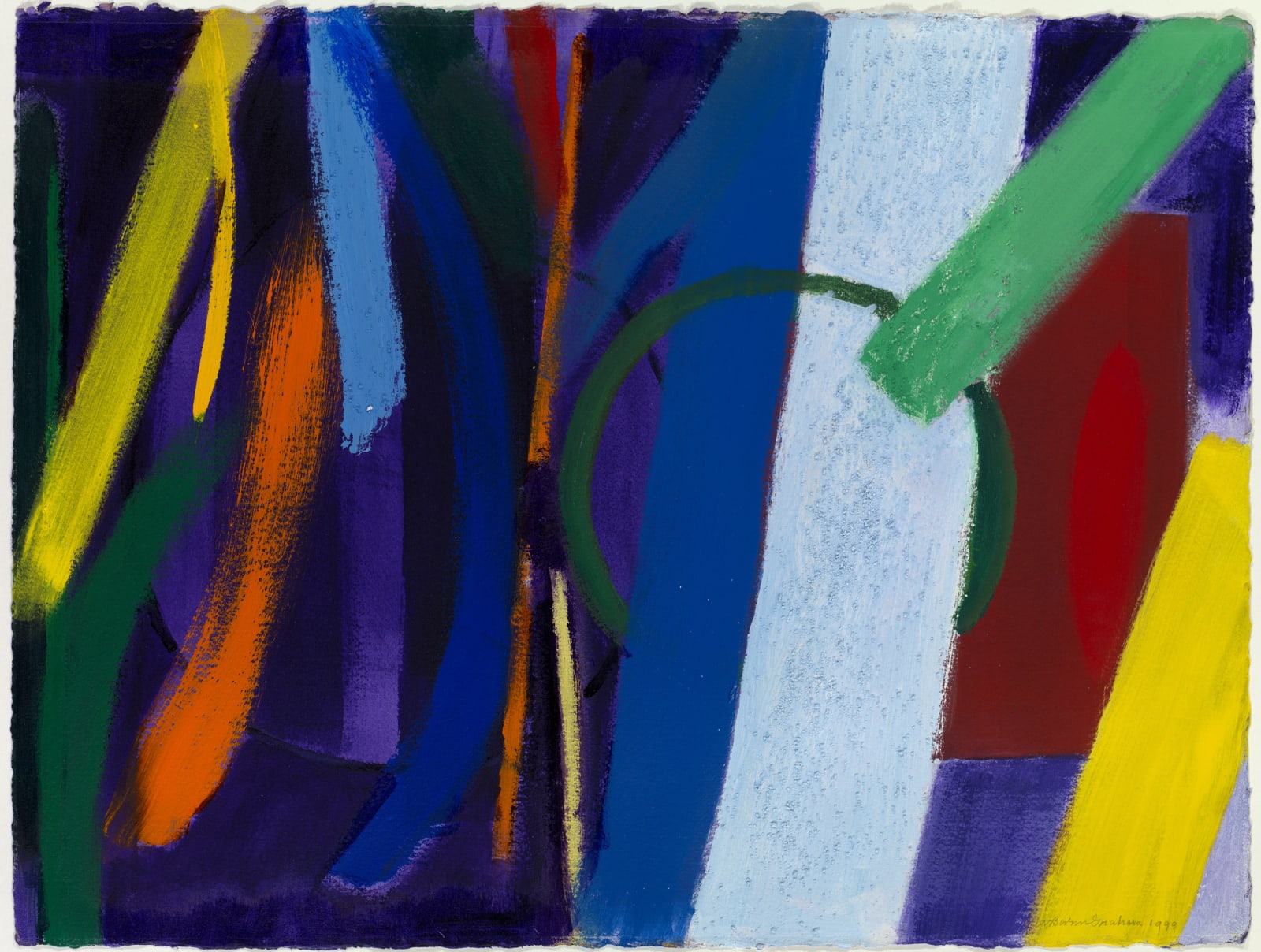Wilhelmina Barns-Graham
Night Garden, 1999
Acrylic on Paper
23 x 30 1/4 in
58 x 77 cm
58 x 77 cm
Signed & dated 'W Barns Graham 1999' (lower right)
Sold
Wilhelmina Barns-Graham’s late abstract paintings represent one of the high points of her long and varied career. As she worked through her 80s, her paintings became bolder, brighter and more...
Wilhelmina Barns-Graham’s late abstract paintings represent one of the high points of
her long and varied career. As she worked through her 80s, her paintings became
bolder, brighter and more immediate. These works were executed in acyclic. The
quick drying medium allowed the artist to rapidly overlay largely unmodulated and
contrasting colours. While there is a sense of Barns-Graham ‘letting rip’ - as described
in Virginia Button’s recent book on the artist - the compositions were still routed in
her systemic experimentation of the 70s and 80s.
Despite her advancing age and her past preference for reduced scale, Barns-Graham’s
late works are often relatively large. This allows the viewer a more immersive
experience, even with the works on paper. Yet there is delicacy and nuance to the
work; the paintings are hardly a gestural free-for-all. nor are the colour combinations
entirely random or based solely of aesthetic choices. They are in no small part related
to her synaesthesia condition in which colours are associated to people, places,
numbers and letters.
her long and varied career. As she worked through her 80s, her paintings became
bolder, brighter and more immediate. These works were executed in acyclic. The
quick drying medium allowed the artist to rapidly overlay largely unmodulated and
contrasting colours. While there is a sense of Barns-Graham ‘letting rip’ - as described
in Virginia Button’s recent book on the artist - the compositions were still routed in
her systemic experimentation of the 70s and 80s.
Despite her advancing age and her past preference for reduced scale, Barns-Graham’s
late works are often relatively large. This allows the viewer a more immersive
experience, even with the works on paper. Yet there is delicacy and nuance to the
work; the paintings are hardly a gestural free-for-all. nor are the colour combinations
entirely random or based solely of aesthetic choices. They are in no small part related
to her synaesthesia condition in which colours are associated to people, places,
numbers and letters.
